Kyoto for First-Timers: Best Things to Do & Travel Guide 2025
Kyoto, in Japan’s Kansai region, is the heart of traditional Japanese culture. It was Japan’s capital from 794 to 1869 and boasts 17 UNESCO World Heritage Sites, over 1,600 temples, and 400+ shrines.
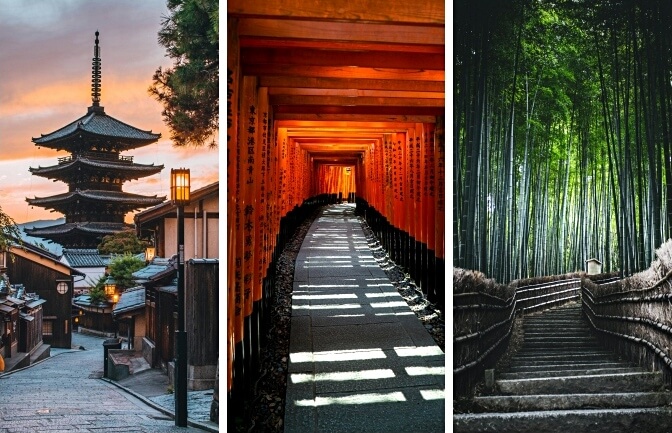 photo by Roméo A. | David Emrich | Marek Piwnicki
photo by Roméo A. | David Emrich | Marek Piwnicki
How to Get to Kyoto
Kyoto has no airport—the closest is Kansai International Airport (KIX).
Three ways to get there:
- Haruka Express Train: Fastest and comfiest, direct to Kyoto Station (~75 mins, ¥2,200).
- Bus: Direct, a bit slower (~100 mins, ¥2,800).
- Local Trains: Cheapest, one transfer (~116 mins, ¥1,910).
Check Kansai Airport to Kyoto, Tokyo to Kyoto and Kyoto to Osaka for more information.
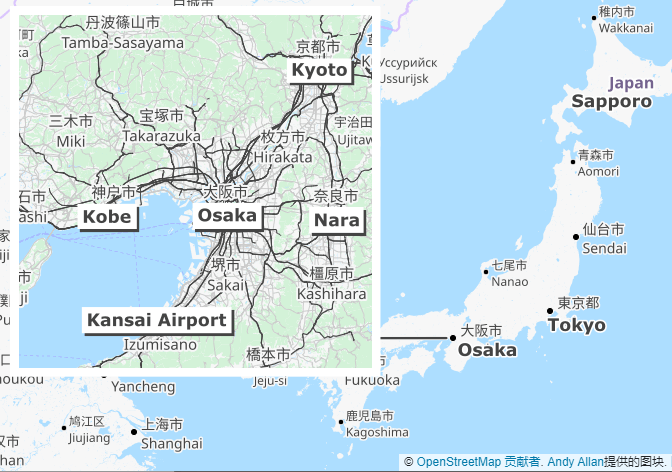
Where to Stay in Kyoto
Stay near Kyoto Station for easy access to everything. The following hotels are approximately a 5-minute walk from Kyoto Station.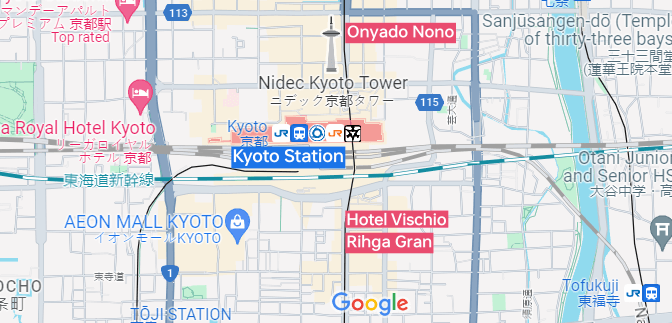
Onyado Nono Kyoto Shichijo Natural Hot Spring★★★★ Location 8.8 | Facilities 9.4 | Value for money 8.9
Rihga Gran Kyoto★★★★ Location 9.0 | Facilities 9.2 | Value for money 8.9
Hotel Vischio Kyoto by GRANVIA★★★★ Location 9.6 | Facilities 9.4 | Value for money 9.1 
Getting Around Kyoto
Bus:
Hits all major sights but can get stuck in peak-season traffic.
Fares: Flat rate in the city—¥230 adults, ¥120 kids. Board at the back, pay at the front when exiting. IC cards (ICOCA, Suica) work.
Use Google Maps or check Kyoto bus map.
Watch this video for tips.
Subway:
Skip Kinkakuji, and you can reach most city sights by subway + walking. Fares start at ¥220, depending on distance. Plan with Google Maps.
Kyoto Itinerary
Day 1:
Morning: Visit Kinkakuji (gold temple) and Nijo Castle (historic fortress).
Lunch: Eat at Nishiki Market/Kawaramachi (yummy street food).
Afternoon: Stroll to Kiyomizu-dera & surrounding area (temples and scenic streets).
Travel: Kyoto Station to Kinkakuji (~45-min bus), Kinkakuji to Nijo Castle (~25-min bus), Nijo Castle to Nishiki (~20-min bus).
Day 2:
Full day at Arashiyama (must-do in fall for leaves!) or Biwako Valley (open late April–early November, go on clear days).
Travel: JR trains all day—super easy.
Day 3:
Visit Fushimi Inari Taisha (red torii gates) + Uji (matcha heaven) in one day.
Travel: JR trains are your best bet.
Day 4:
Fill in gaps based on your vibe—maybe hit Kyoto Railway Museum or explore more shrines!
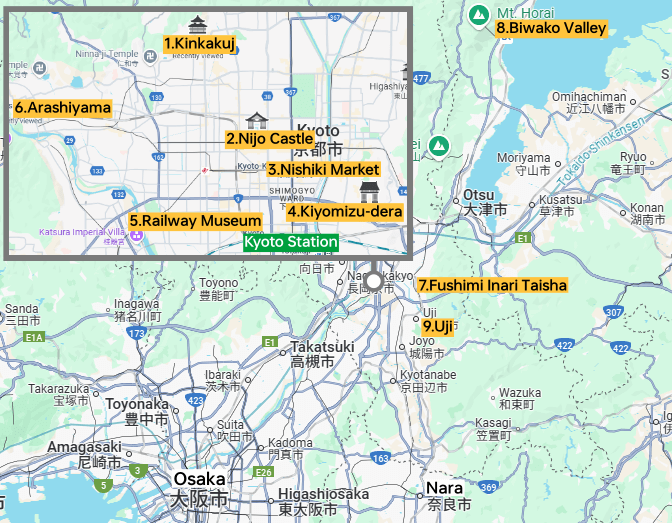
Top Attractions in Kyoto
1. Kinkakuji (Gold Pavilion Temple)
Kinkakuji’s famous for its dazzling gold-covered Shariden Hall (rumored to use 20 kg of gold leaf!). Built in 1397, it’s a Japanese National Treasure and one of Kyoto’s top temples.
Open: 9:00 AM–5:00 PM.
Cost: Adults ¥500, kids (elementary/junior high) ¥300.
Time: 30 minutes.
Tips:
The star is the gold Shariden Hall by the lake. It’s got three floors: Floor 1 (noble style from the Heian period, with Buddha and two attendants), Floor 2 (samurai style from the Kamakura period, with Kannon), and Floor 3 (Tang Dynasty Zen style, said to hold Buddha’s relics—but no solid proof).
The original burned down in 1950 (thanks to a 21-year-old monk) and was rebuilt in 1955. Check the map here.
Note:
“Shariden” means relics in Sanskrit (think high monks’ remains or crystals). Buddha’s relics are super rare—the only confirmed ones are at Famen Temple in China (his finger bone).
Getting There: City Bus 12, 59, 205, or M1 to Kinkakuji-michi stop.
Website: shokoku-ji.jp.
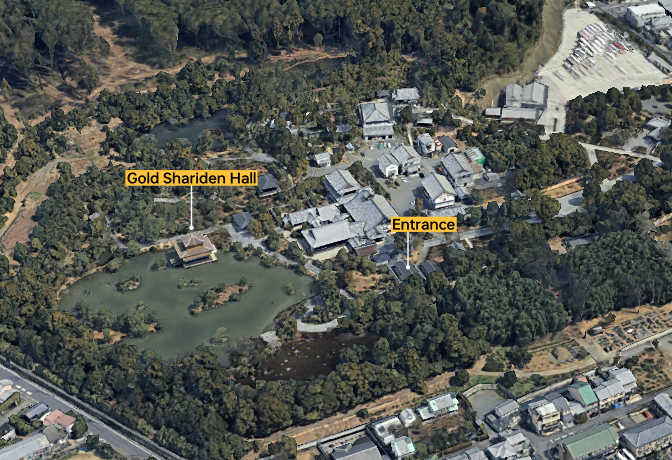
Photo Highlights:
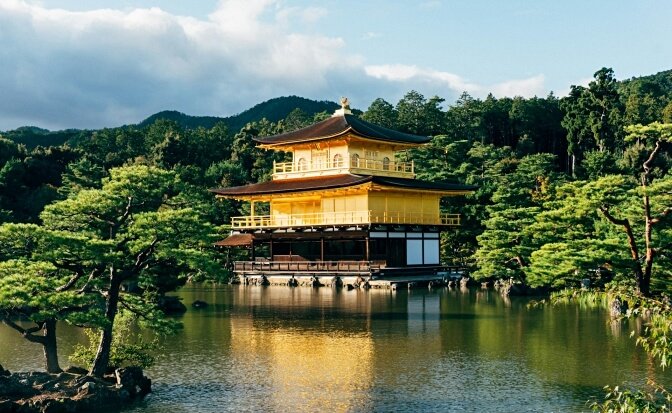
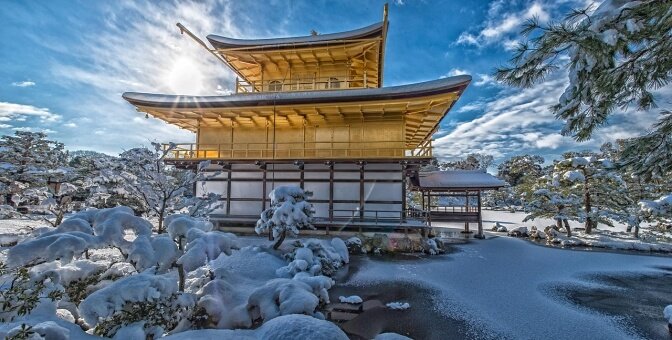 photo by James Butterly | Kanenori
photo by James Butterly | Kanenori
2. Nijo Castle
Built in 1601 by Tokugawa Ieyasu, Nijo Castle was his Kyoto home and a symbol of his power. It’s huge—275,000 sqm, about 40 soccer fields or 3/8 of Beijing’s Forbidden City! A UNESCO World Heritage Site since 1994.
Tokugawa Ieyasu unified Japan in 1603, ending wars and kicking off 265 years of peace (the Edo period, until 1868’s Meiji Restoration).
Open: 8:45 AM–4:00 PM, closed late December–early January.
Cost: Get the castle + Ninomaru Palace ticket: Adults ¥1,300, junior/high school students ¥400. Buy on-site.
Time: 1–1.5 hours.
Tips: Pick from 1-hour, 2-hour, or 2.5-hour routes. Rent an audio guide (¥600) for extra fun.
Getting There:
Subway: Tozai Line to Nijojo-mae Station.
Bus: City Bus 9 or 50 to Nijojo-mae stop.
Website: nijo-jocastle.city.kyoto.lg.jp.
Watch: 二条城PV「新緑の二条城」
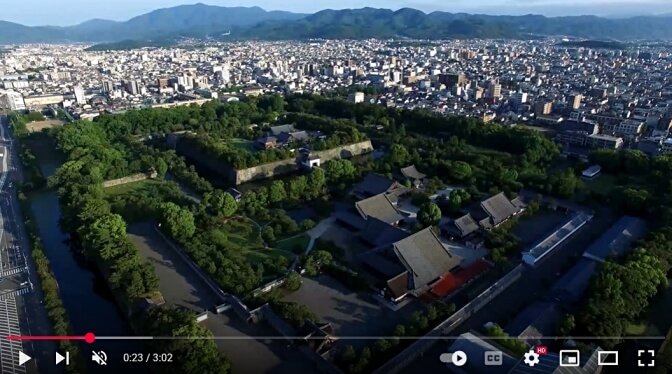
Watch: 日本京都元離宮 20250314
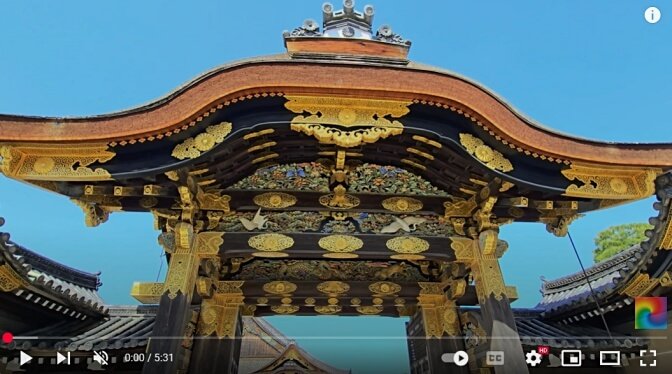
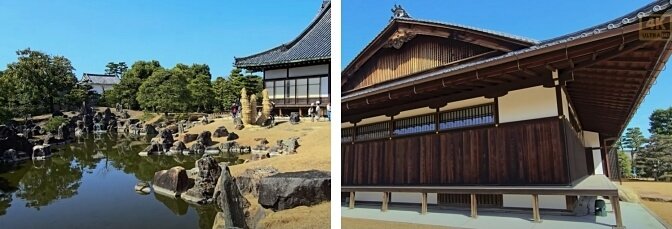
Photo Highlights:
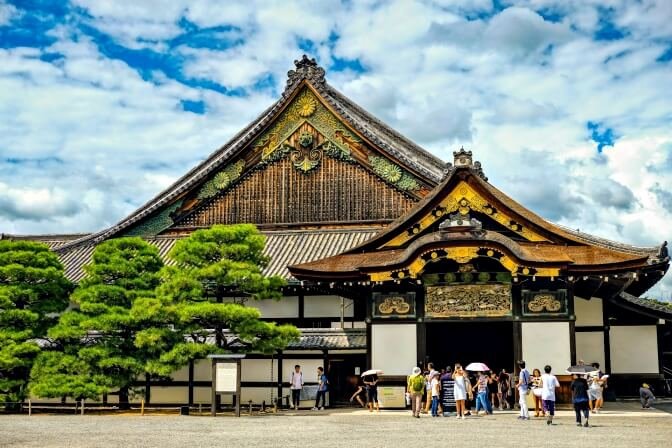 photo by Eleonora Albasi
photo by Eleonora Albasi
3. Nishiki Market / Kawaramachi Area
Nishiki Market’s in Kyoto’s lively Kawaramachi area. Think tasty street food, cool shops, and big department stores like Daimaru and Takashimaya.
Open: 7:00 AM–6:00 PM (Nishiki Market).
Time: 1 hour+.
Getting There:
Subway: Shijo Station or Kyoto City Hall Station.
Hankyu Train: Karasuma or Kyoto-Kawaramachi Station.
Bus: City Bus 5 to Shijo-Takakura stop.
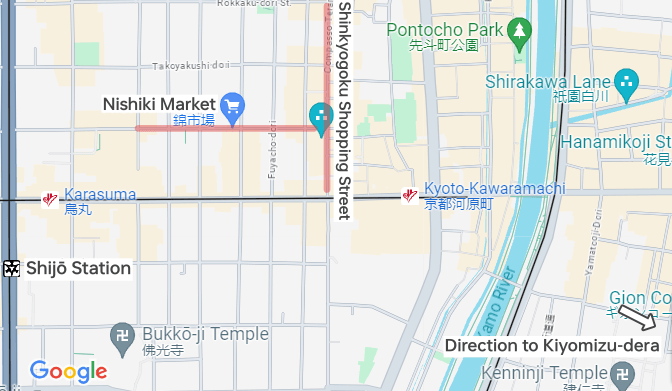
Nishiki Market, Kyoto’s 400-year-old “kitchen,” stretches 390 meters with ~140 shops selling fruit, snacks, and seafood. There’s even a tiny shrine (Nishiki Tenmangu) at the end—more for vibes than deals.
Watch: 食欲の秋!! 秋の味覚が揃い始める『錦市場』
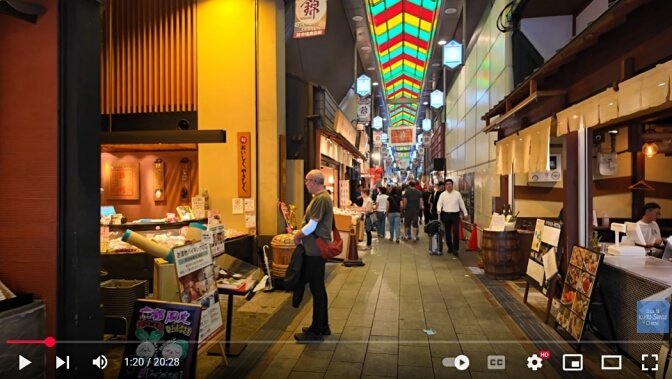
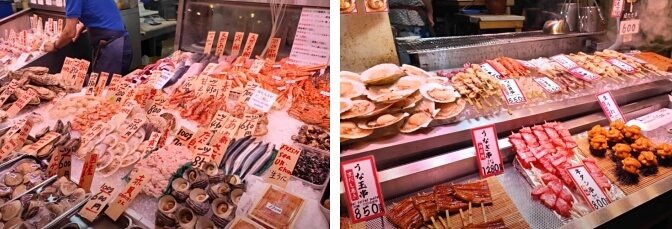
Stroll Shin-Kyogoku Shopping Street, like Osaka’s Shinsaibashi but less crowded and more chill.
Watch: 京都繁華街散歩
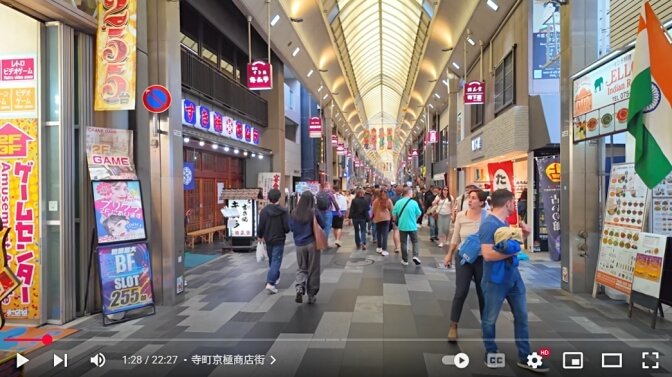
4. Kiyomizu-dera & Surrounding Area
Kiyomizu-dera is Kyoto’s superstar temple! Start from Kawaramachi and stroll to the temple through scenic spots: Kamogawa > Hanami-koji > Kennin-ji > Kodai-ji > Hokan-ji > Ninenzaka > Sannenzaka > Kiyomizu-dera. On the way back, swing by Yasaka Shrine for dreamy night views.
Time: 3–4 hours (walk round-trip, with tons of sights, eateries, and shops—no rush needed!).
Getting There:
Bus: City Bus 207 to Kiyomizu-michi stop, or Bus 206, 100, or 18 to Gojozaka stop.
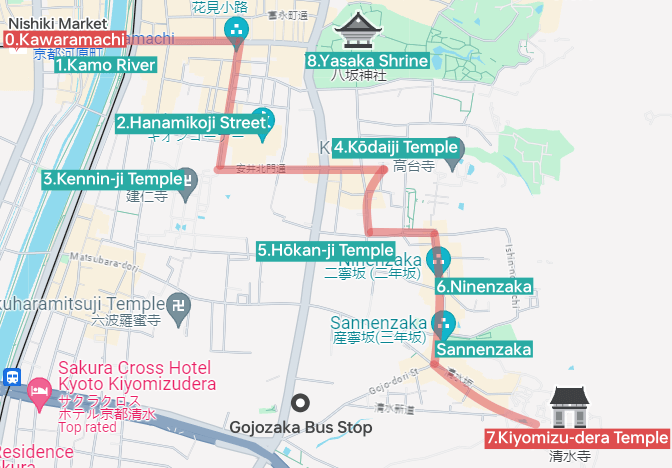
4.1 Kamogawa
The river’s nice but nothing wild. Snap a quick pic at Shijo Bridge and keep going.
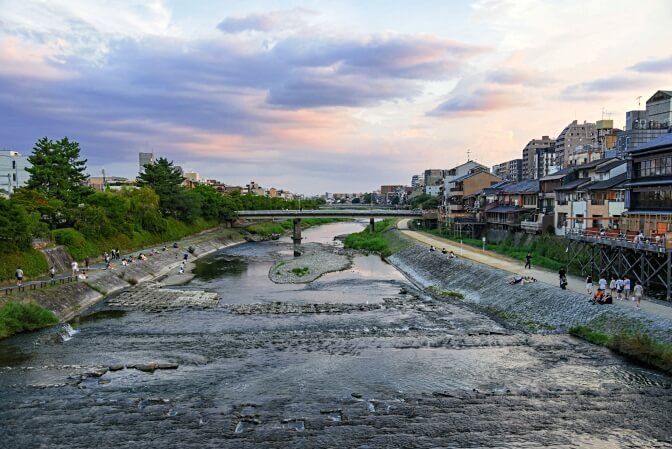 photo by Luna Wang
photo by Luna Wang
4.2 Hanami-koji
This short street’s lined with cute two-story wooden buildings. At dusk, you might spot a geisha! They perform dances, tea ceremonies, or shamisen music at nearby teahouses (fancy private clubs, pricey, book ahead) or ryotei (high-end Japanese restaurants). Geisha offer charm, not adult services.
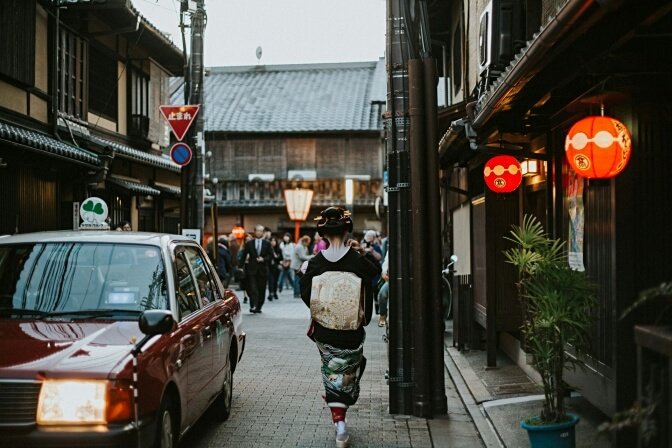 photo by Jay
photo by Jay
4.3 Kennin-ji
This 800-year-old Zen temple (founded by Eisai, who studied in China’s Song Dynasty) is a gem. Eisai brought tea seeds to Japan, kicking off the country’s tea craze—he’s called Japan’s “Tea Ancestor”! Check out the dry rock garden, a huge Twin Dragons painting (modern, 175 sqm, epic), and a replica Wind & Thunder Gods screen (original’s at Kyoto National Museum). Art lovers, this one’s worth the ticket!
Open: 10:00 AM–4:30 PM.
Cost: Adults ¥800, kids (elementary/junior high) ¥500.
Watch: A wonderful place to meditate: Kenninji Temple
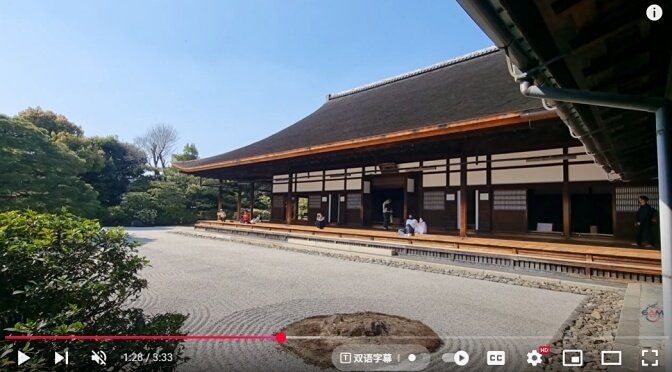
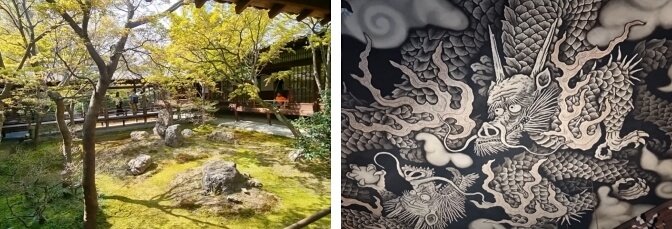
4.4 Kodai-ji
Built in 1606, this temple’s part of the same Zen sect as Kennin-ji. It’s quiet, great for cherry blossoms or fall leaves, and has a cool bamboo grove any time of year.
Open: 9:00 AM–5:00 PM.
Cost: Adults ¥600, junior/high school students ¥250, elementary kids free.
Watch: Kodaiji
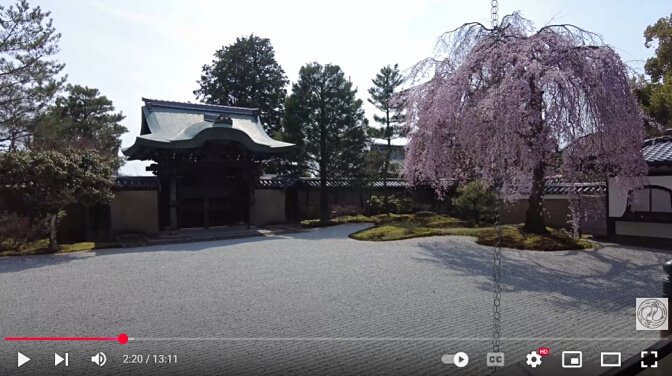
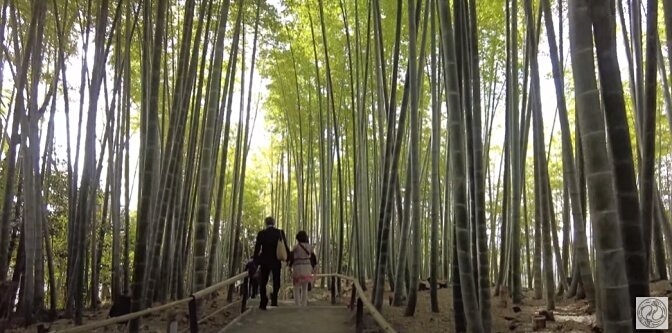
Watch: Explore Japan | Kyoto’s Most Beautiful Autumn
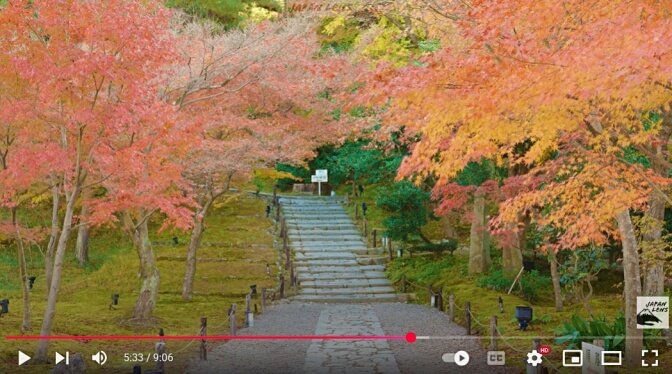
4.5 Hokan-ji (Yasaka Pagoda)
Open sporadically, ¥400 entry, but just admire it from outside. For the best photo, search “Yasaka Pagoda Photograph Spot” on Google Maps.
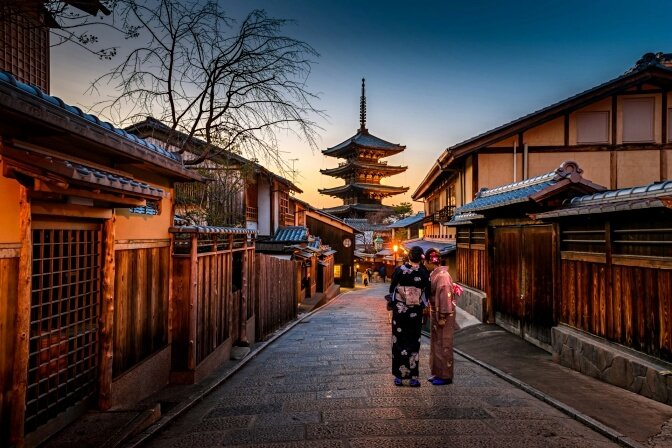 photo by Sorasak
photo by Sorasak
4.6 Ninenzaka & Sannenzaka
These narrow, sloping streets are packed with charming shops—pure Kyoto magic! Rumor says tripping on Sannenzaka brings three years of bad luck (a Japanese wordplay thing). Since the Meiji era, it’s been called Sannen-zaka (“safe birth slope”) to dodge the curse. If you stumble, pop into Kiyomizu-dera or Yasaka Shrine for a lucky charm to fix it!
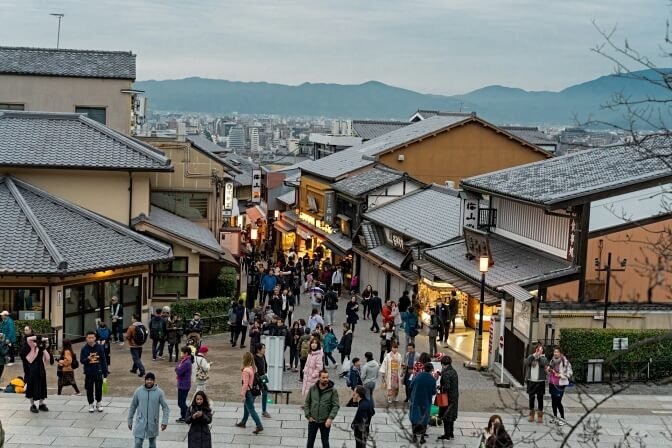 photo by Shawn Tung
photo by Shawn Tung
4.7 Kiyomizu-dera
Built in 778, this 1,250-year-old temple worships Kannon and is a UNESCO World Heritage Site (1994). It’s been rebuilt (mostly in 1633) after several fires.
Open: 6:00 AM–6:00 PM (until 9:30 PM during events).
Cost: Adults ¥500, kids (elementary/junior high) ¥200.
Website: kiyomizudera.or.jp.
Watch: Kyoto Kiyomizudera Drone
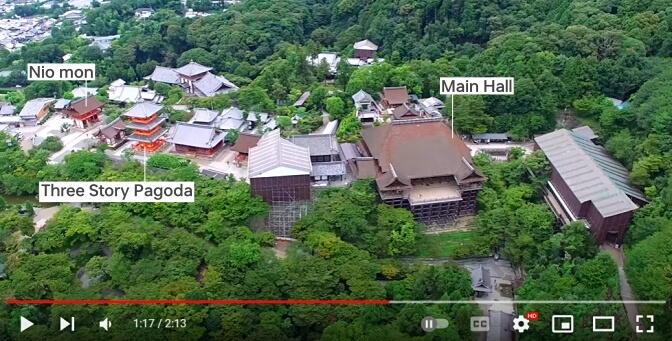
Kiyomizu-dera Temple’s main entrance is Nio-mon.
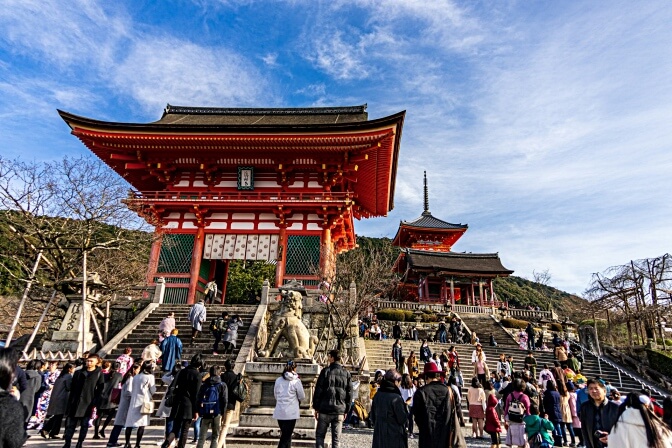 photo by Sung Shin
photo by Sung Shin
You can also enjoy city views and spot Kyoto Tower from here.
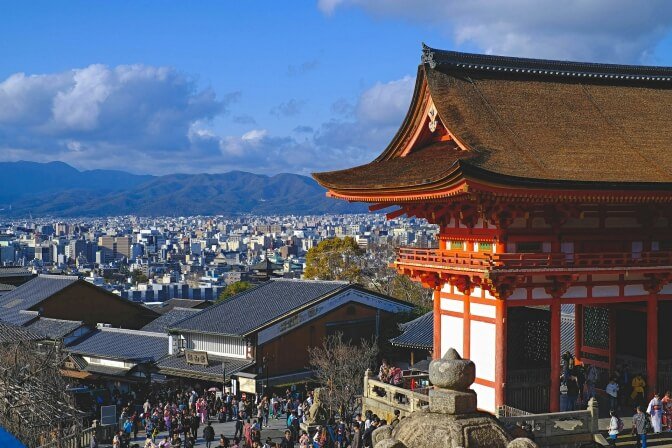
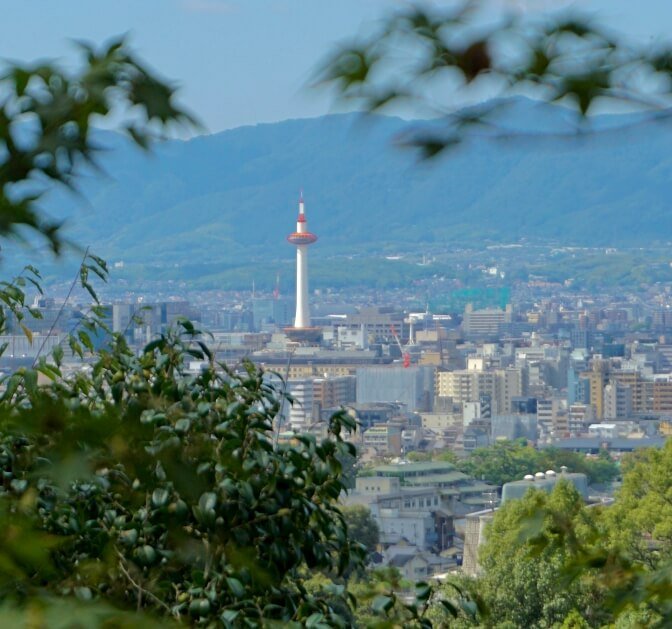 photo by Harry Cunningham | HorseRat
photo by Harry Cunningham | HorseRat
The main draw is the Kiyomizu Stage, a 13-meter-high platform on Otowa Mountain’s cliff, held up by 139 pillars made from 400-year-old zelkova trees (biggest ones are ~12m long, ~2m thick). It’s built with mortise-and-tenon joints (a Buddhist technique from China via Korea, tweaked by Japanese for earthquake-proofing).
Cherry blossoms (late March–early April) and fall leaves (mid-November–early December) are stunning.
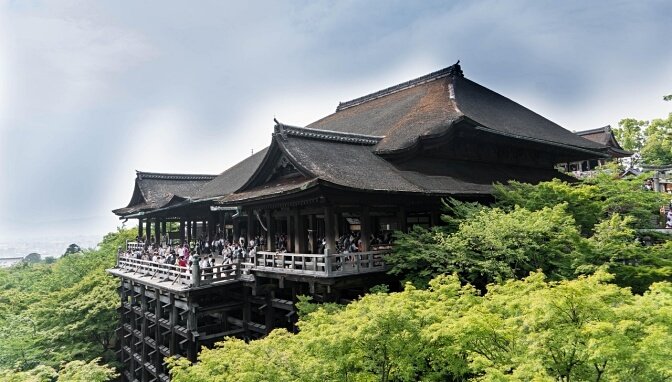
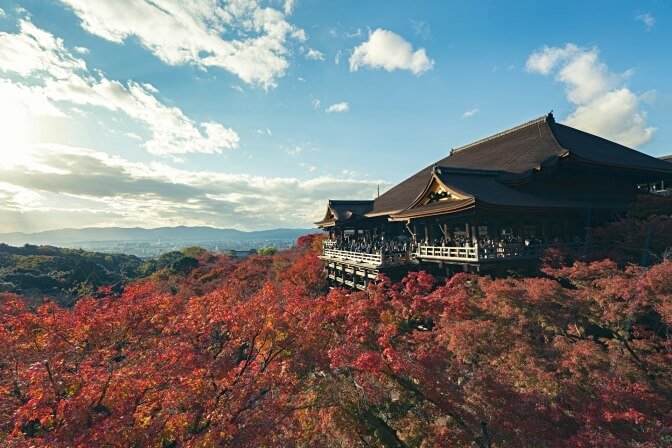 photo by Michelle_Maria | Ritz
photo by Michelle_Maria | Ritz
4.8 Yasaka Shrine
Japan has 2,300 Yasaka shrines, and this is the main one. Free entry, open 24/7, and way prettier at night—perfect for your return trip. It hosts Kyoto’s Gion Festival in July, with three giant floats parading from here through the city.
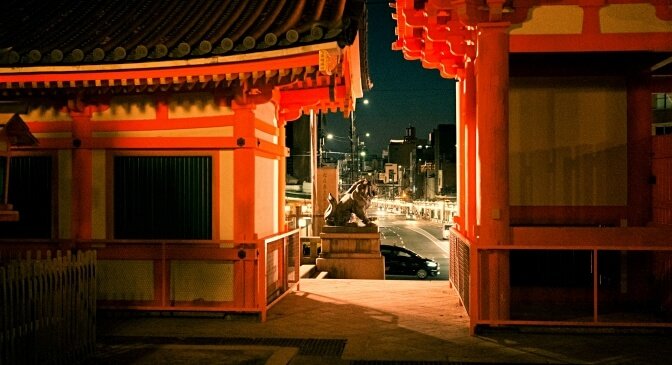
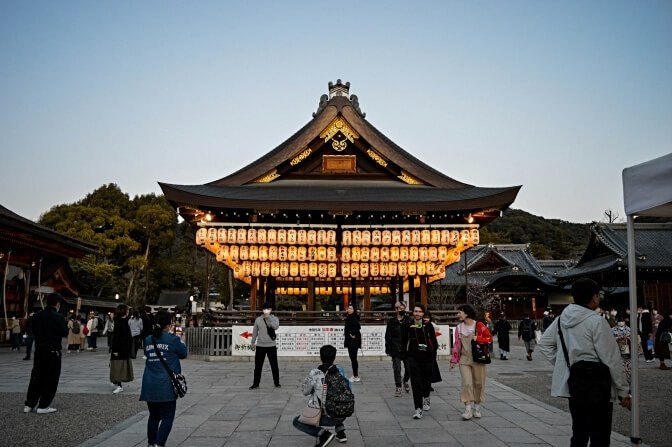 photo by ayumi kubo | Danique Dohmen
photo by ayumi kubo | Danique Dohmen
5. Kyoto Railway Museum
All aboard! This museum’s packed with real trains, cool railway models, and a steam train that actually toots! Perfect for a fun family day out.
Open: 10:00 AM–5:00 PM, closed Wednesdays and late December–early January.
Cost: Adults ¥1,500, university/high school students ¥1,300, elementary/junior high students ¥500. Book online!
Time: 2–3 hours.
Tips:
Check out real trains (from steam locomotives to bullet trains), models, and a mini train station indoors. Ride the steam train outside (runs hourly, 10-minute ride, extra ticket: adults ¥300, kids ¥100).
Getting There:
Train: Take the Sagano Line to Umekoji-Kyotowest Station.
Bus: City Bus 205/208 to Umekoji Park/JR Umekoji-Kyotowest Station, or Bus 86/88 to Umekoji Park/Kyoto Railway Museum.
Website: kyotorailwaymuseum.jp.
Watch: kyoto railway museum promotion movie
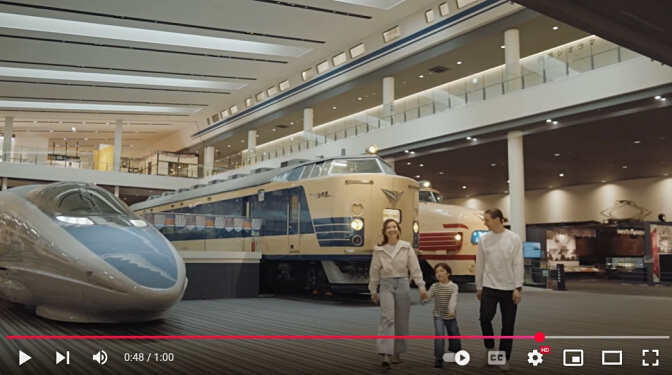
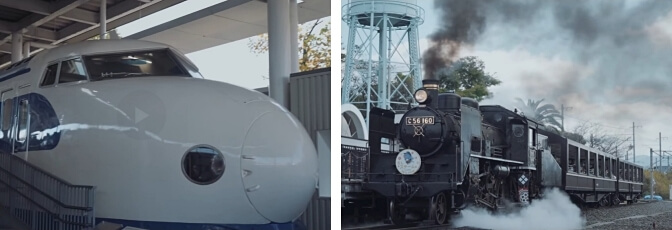
6. Arashiyama
Arashiyama’s got mountains, rivers, bamboo groves, plus temples and a scenic train ride. It’s super close to Kyoto but feels like a whole different world—definitely worth a visit! Famous for cherry blossoms and fall leaves.
Time: Half or full day.
Plan: Arashiyama Day Trip Guide
Getting There: Take the JR train from Kyoto Station to Saga-Arashiyama Station (~19 mins, ¥240).
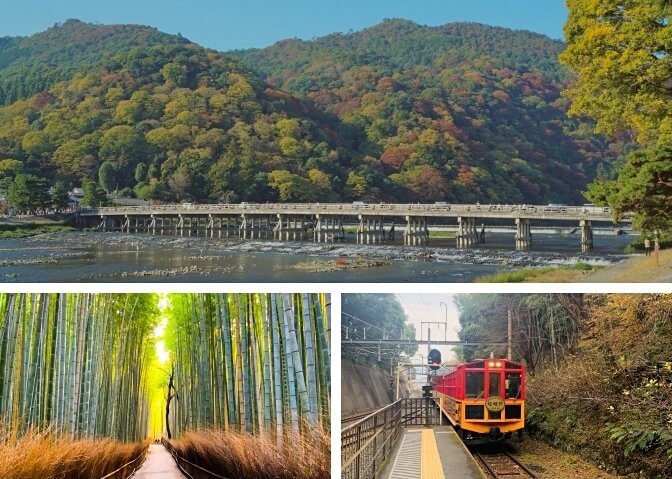 photo by Iffah Suhaili | Shirley Wang | Takashi Hamada
photo by Iffah Suhaili | Shirley Wang | Takashi Hamada
7. Fushimi Inari Taisha
This is Kyoto’s iconic shrine, the head of Japan’s 30,000 Inari shrines! Inari, the god of rice and business, is a big deal for farmers and shopkeepers. The famous red torii gates are a must-see.
Open: 24/7, 365 days.
Cost: Free!
Time: 1–2 hours (1–1.5 hours to hike to the top, but no views up there).
Tips: Stash your bags at station lockers or nearby shops.
Getting There:
Train: JR Nara Line to Inari Station (right at the shrine). Or Keihan Main Line to Fushimi-Inari Station (5-min walk).
Bus: South 5 Bus to Inari-Taisha-mae (7-min walk).
Website: inari.jp.
Visit the main hall to make a wish, buy an omamori (charm), or hang an ema (wish plaque).
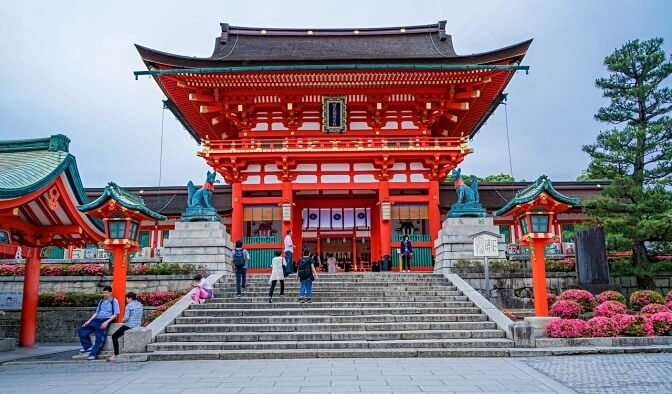 photo by Michelle_Maria
photo by Michelle_Maria
Foxes are messengers of Inari deities, not Inari deities themselves.
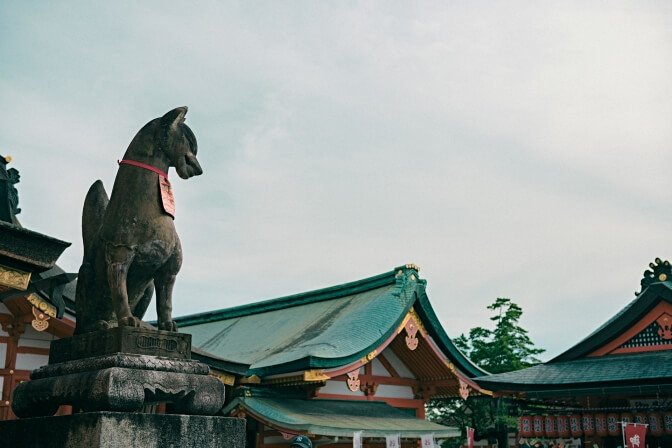 photo by Gavin Li
photo by Gavin Li
Hike through the thousand torii gates (about 10,000 total, donated by people and businesses—bigger ones cost more!). Want photos with fewer crowds? Keep climbing—the higher you go, the quieter it gets
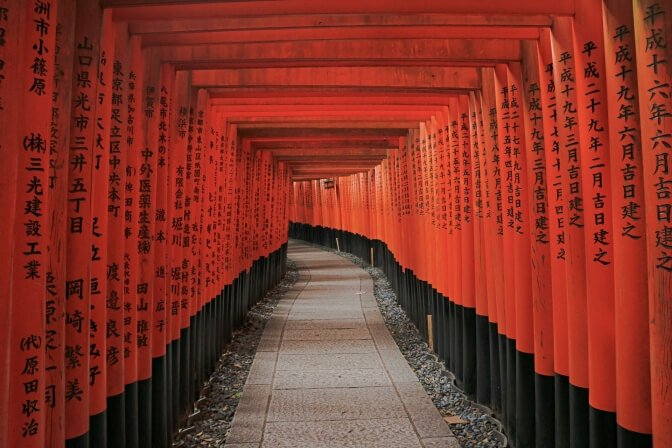 photo by Yukitaka Iha
photo by Yukitaka Iha
Watch: Walking Through Fushimi Inari Taisha, Kyoto, Japan
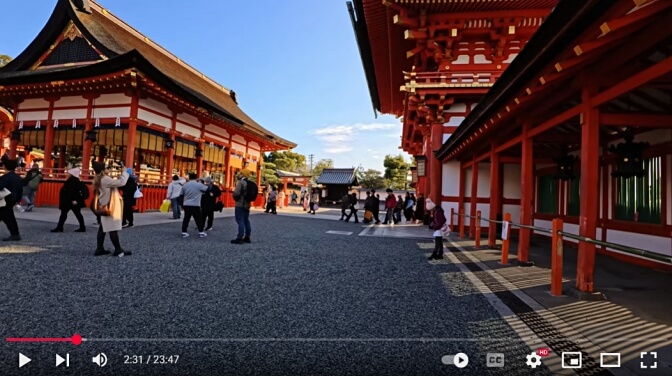
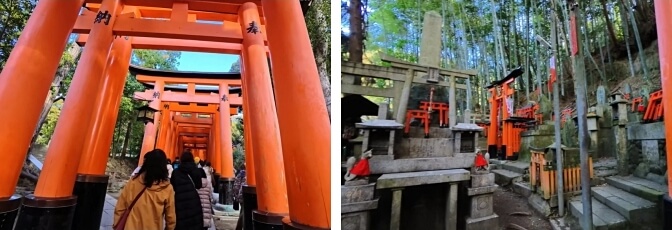
Day Trips from Kyoto
Uji
Uji is all about matcha and the stunning Byodoin Temple. Bonus: the Nintendo Museum is super close! It’s way less crowded than Kyoto or Nara, perfect for a chill day exploring a classic Japanese town.
Getting There: ~18 km from Kyoto Station, just 16 minutes by train.
Time: Half or full day.
Plan: Check our Uji Day Trip Guide.
Tip: Combine Uji with Fushimi Inari Taisha for an awesome day!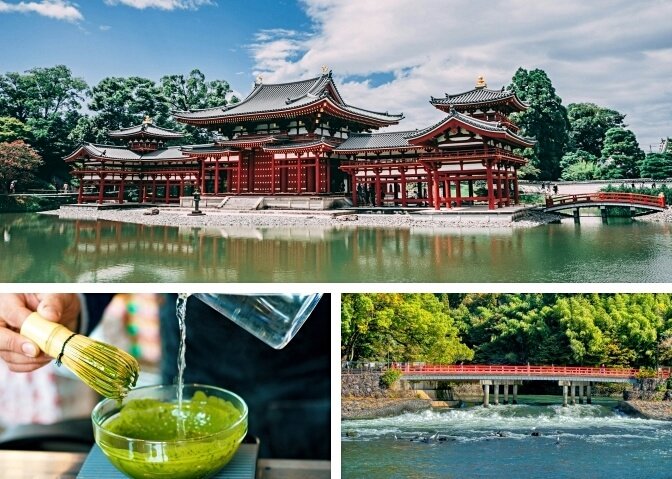 photo by jc3211 | Jason Leung | Thomas Kinto
photo by jc3211 | Jason Leung | Thomas Kinto
Nara
Nara’s got 1,300 years of history as Japan’s first capital, packed with cool temples. But let’s be real—most people come for the cute deer!
Getting There: ~43 km from Kyoto Station, about 46 minutes by train.
Time: Full day.
Plan: Check our Nara Day Trip Guide.
Tip: Heading from Kyoto to Osaka? Stop in Nara and use a luggage delivery service to roam free!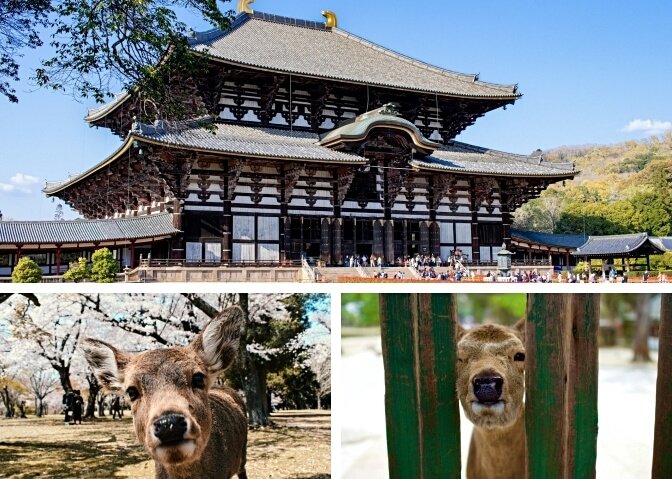 photo by Hanna May | Agathe | Alex Kolpikov
photo by Hanna May | Agathe | Alex Kolpikov
Biwako Valley
Lake Biwa, in Shiga Prefecture, is Japan’s biggest freshwater lake. Biwako Valley, perched on a mountain at 1,100 meters, delivers jaw-dropping lake views—perfect for spring, summer, or fall! In winter, it transforms into a cool ski resort. If you’re feeling temple overload from Kyoto’s many shrines, this spot’s stunning lake scenery is a refreshing change.
Open: Late April to early November, 9:00 AM–5:00 PM (check hours here).
Cost: Cable car tickets – Adults ¥4,000, Kids ¥2,000. Buy online a day early for a ¥1,000 discount!
Time: 4–5 hours (2 hours travel round-trip, 2–3 hours for fun and food).
Tips:
- Check the weather and live camera feed before you go—sunny days are epic, but rain or fog can hide the views.
- It’s 7–10°C colder at the top. Summer’s nice and cool, but spring or fall can be chilly and windy, so pack a jacket!
Getting There:
From Kyoto: Hop on the JR Kosei Line to Shiga Station (~40 mins, ¥590).
Bus: From Shiga Station, grab Bus #68 to Biwako Valley Mae (~10 mins, ¥410, 1–2 buses/hour—move fast after the train!). Check timetable here. IC cards (ICOCA/Suica) work. The cable car station is right at the bus stop.
Taxi: ~¥1,700 from Shiga Station. If none are around, ask the Shiga Tourism Association near the station to call one. Carpool to save cash!
How to Explore:
Cable Cars:
Three rides to the top: First: A 5-minute enclosed cable car (mandatory, climbs 800 meters). Next two: Open-air chairlifts (short but fun, unlimited rides, or hike for awesome views).Activities:
Free: Swings, grass sledding, lounge chairs, fitness gear.
Paid: Zipline (¥4,300 for 6 courses, ~2 hours).Food: Summit restaurants and vending machines (prices like in the city, check here).
After: Stroll 2 minutes east from Shiga Station to Lake Biwa’s shore for water activities.
Website: biwako-valley.com.
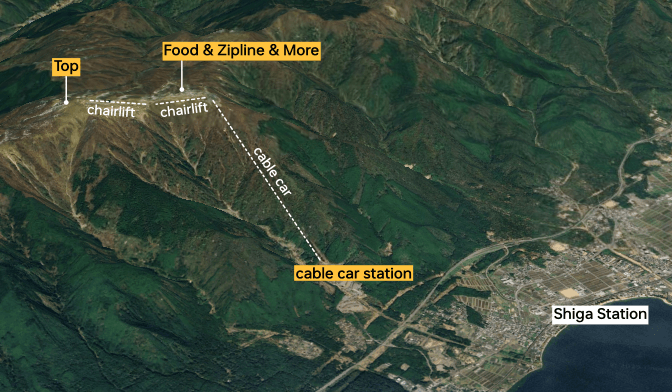
Watch: びわ湖バレイが最高でした!琵琶湖ビューの絶景
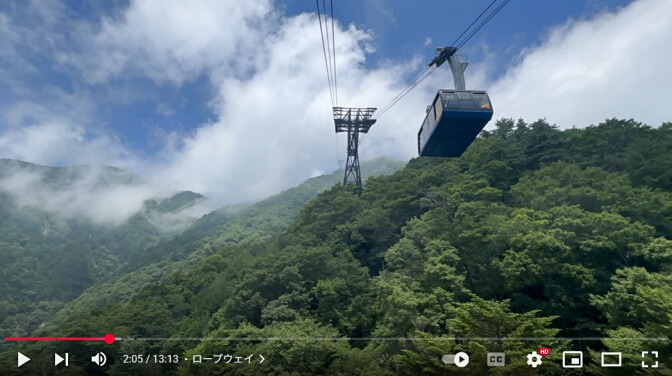
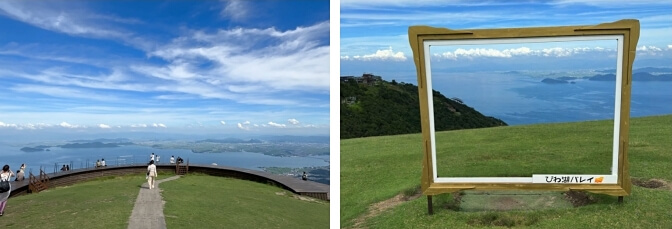
Hope you enjoy your Kyoto adventure!
ヽ(´▽`)/